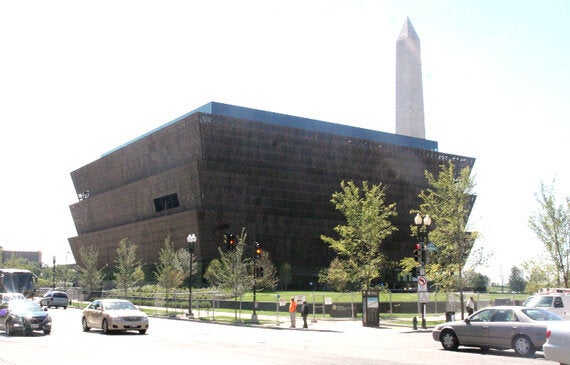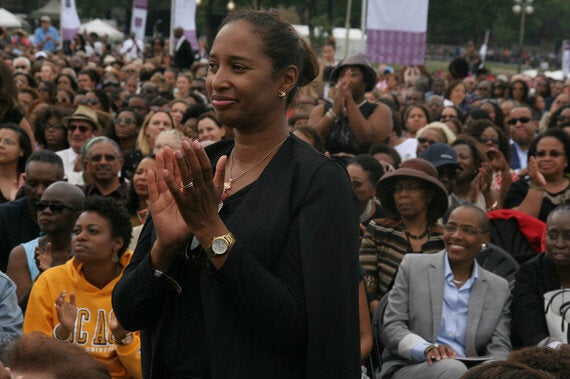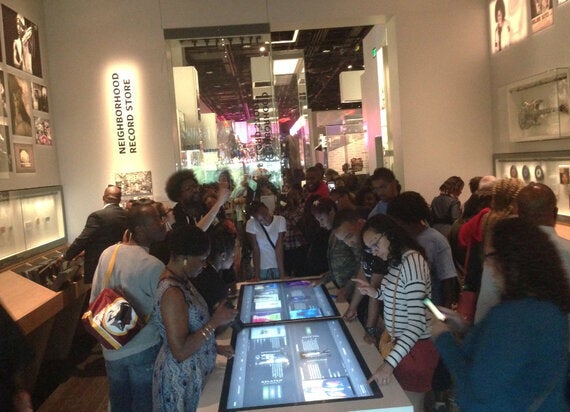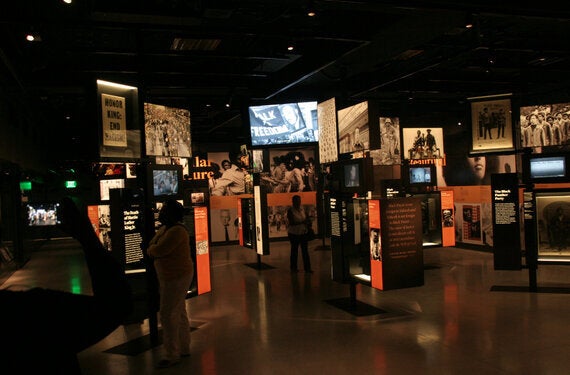
As the Director of the Black Cultural Archives http://www.bcaheritage.org.uk in the United Kingdom, the opening of the National Museum for African American History and Culture (NMAAHC) https://www.nmaahc.si.edu has been one of the most inspiring events in my life. I've experienced how tough it is to secure funding and to deliver a Black community-led capital project, so the arrival of the NMAAHC really moved me. The achievement is of historic significance and nothing short of magnificent.
The Founding Director of the NMAAHC, Lonnie Bunch invited my wife and I for the three-day opening celebration. The museum located on the Washington Mall is a jaw-dropping spectacle, designed by British Ghanaian, David Adjaye, J. Max Bond Jr. and Philip Freelon.
We arrived at 8am on the big day and there were already hundreds of people trying to get through the security checkpoint. The crowds swelled throughout the day and by 6pm, 200,000 excited people had arrived. Many knew that they would not get in but came just to be apart of this monumental occasion.
THE GRAND OPENING

This was a tremendous day for the African-American community in the Capitol, Washington DC. From Oprah Winfrey, Robert De Niro, Angela Basset, Will Smith, Stevie Wonder all on stage and Delory Lindo and many others in the gathering, the question really was who didn't attend? Each gave testimony and set the stage for the Founding Director, Lonnie Bunch.

Lonnie spoke passionately as he thanked and recognised all the major contributors. It was clearly a massive day for him, touching on the museums' exhibits. After he spoke I quietly found a moment to acknowledge his support to Black Cultural Archives. I didn't fully appreciate the gigantic task he was charged with and I wondered how he managed to find the time to answer my many emails, phone calls, or to even visit us in London, during the final push of his fundraising campaign.

PRESIDENTS SUPPORT
Many in this country would be surprised to find out the kind of support that former President George Bush gave for this initiative. It was actually he that signed the bill that enshrines the museum in legislation. At one point he looked to President Obama with a nod and commented on how difficult it was to get the bill through; but Obama is the only President of the 44, that was befitting to give the main address, and he didn't disappoint.
THE MAIN ADDRESS
In the many speeches over the past decade that I have heard President Barack Obama deliver, this was an Obama I had not heard before. He appeared composed but I'm sure I detected a slight quiver in his voice - aware of the significance of his position in this historical landmark. He said for the first time we have an opportunity to tell a fuller story of who we are, from "the President to the Slave". He referred to the important role of both the activist and the keeper of the status quo, asserting that these tensions make the history fascinating. He was acutely aware of the institutions' limitations acknowledging that the NMAAHC can't resolve our social ills, but as an institution it has the power to strengthen, embolden and fortify.
LESSONS FOR US IN THE UK
The struggle to establish Black Cultural Archives took over three decades. The NMAAHC in the United States has been 100 years in the making; however the feat has left me with an indelible mark of what is possible for Black-led organisations here; but there are some major lessons to learn to make our own mark.
- Black-led community organisations in their efforts to become an institution would do well to secure the support of Black people in high profile positions, including those who have achieved wealth.
- A critical mass of community support should underpin the organisations' mission.
- When points (1) and (2) above align, a greater opportunity exists to establish the national and international Black institution.
President Obama and the American establishment articulated the need and the NMAAHC have shown us the way but it's important to recognise that there are differences between the United Kingdom and the United States of America.
There are lessons for us here, that include this need for a synergy of purpose and holding each other to account; and we must empower ourselves through our own agency but I am left considering the uniqueness of the Black British experience. In other words, we have two millennia of Black presence in this country and our tentacles extend throughout the world. This unrealised social capital can be used to propel us forward.